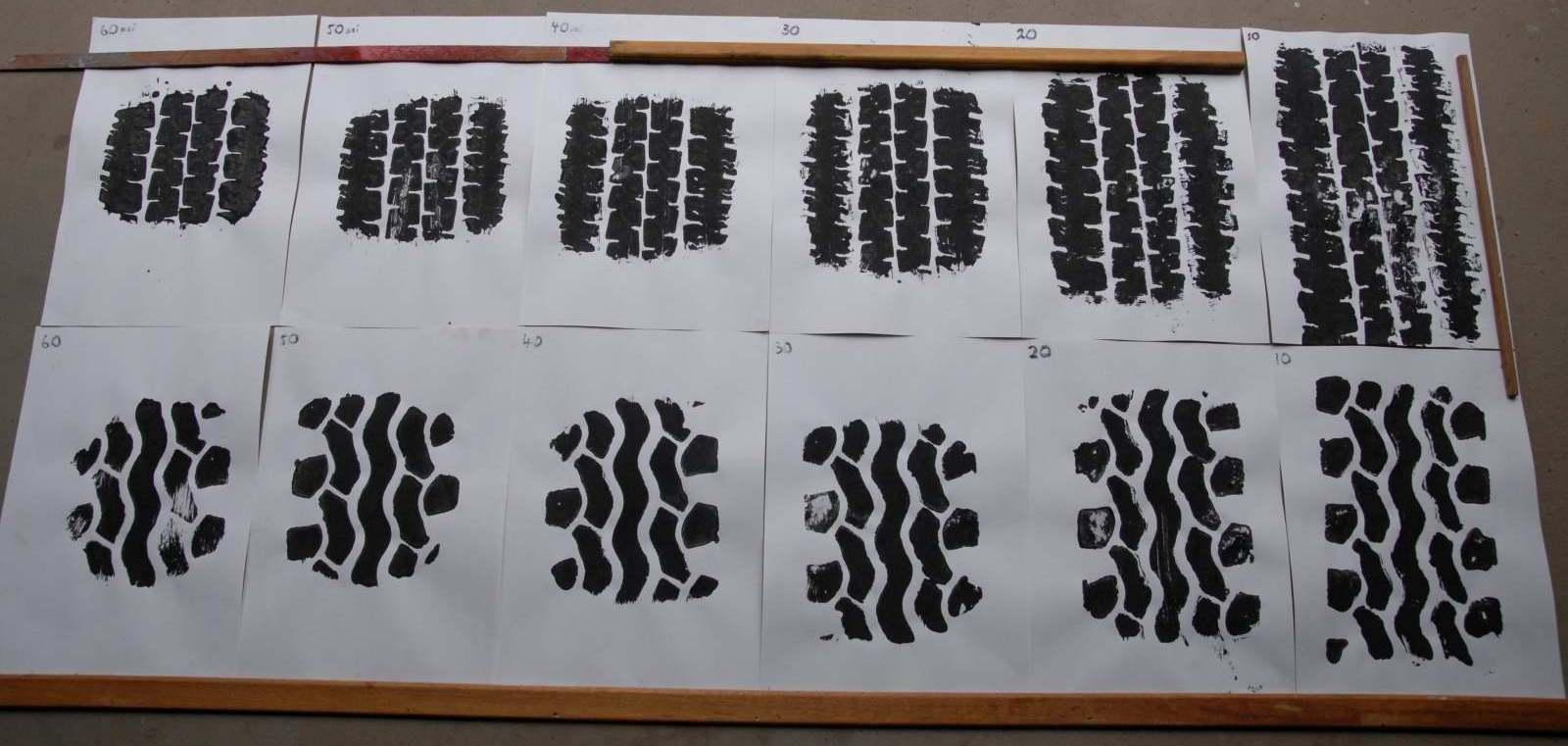Sorry, I just thought that after reading the link that it was pretty blatantly obvious and didn't realise I had to spell it out.

Here is the premise that the thread hinges on.
And this picture is what shows that this premise is incorrect. You'll notice that at a given pressure the contact patches are not compensatory as the article states. Actually the wide tyre has a notably longer contact patch than the skinny tyre in addition to the extra width. The article is working off the premise that a skinny tyre will have the same contact patch as a wide tyre because it elongates more, yet the testing shown in the picture actually disproves this and the contact patch is significantly shorter an narrower than the wide tyre then it falsifies the article.
The picture below actually supports pretty strongly reasons at a technical level why a wide tyre should be much better on sand.... oh sorry, because there is a much greater contact patch and so increased ability to float and drive.
As an aside, I'm not sure what the measurements of those tyres widths are, but 7.50's are typically about 165-170mm wide at the treadface (I support this with my tape measure and a heap of 7.50's at home - Interestingly 235.85's measure at about 190mm) which is unlike the one used and I haven't seen any 235/85's with a wider tread face than a 265/75.






 Reply With Quote
Reply With Quote




Bookmarks